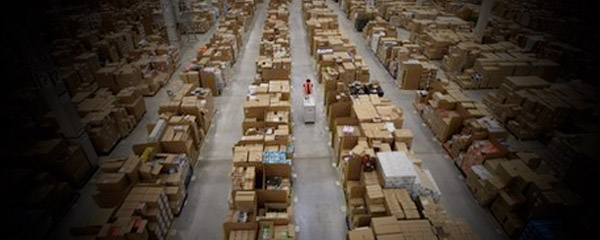Just before joining Cohesity, I had moved into a new house. While the new house is great, moving just sucks. No one likes it, it always takes longer than you expect, you lose things along the way, and it’s hard to find things you need at the new house. And how ridiculous is it that you end up moving a bunch of stuff you really didn’t want in the first place, but can’t seem to get rid of. Something I haven’t done before, which is just paying someone to pack up my whole house and move everything and unpack at the new place. I’ve just never been able to justify in my mind paying 3x – 4x the cost of moving for that service. But I know lots of people do it.
I can’t help but think that this is what companies have to deal with every day in their Secondary Storage. Secondary Storage is everything outside of your primary storage. This includes backups, archives, file services, cloud, test-dev, analytics, IoT data, Hadoop clusters, etc. Companies have to spend thousands of dollars on a variety of different hardware and software tools to help manage all of their secondary data, but often end up with a very silo’d and fragmented infrastructure. They have tons of copy data (multiple copies of the same data), and tons of dark data (data that is stored somewhere but left unused). They end up paying for much more infrastructure than they need because of all the inefficiency, not to mention the challenges that come along with trying to manage and maintain all those different vendor’s products.
Companies don’t have a choice with their primary storage. They pay a premium for infrastructure and storage that will meet the mission critical SLA’s and performance needs of their business. But Secondary Storage should be the place where you don’t have to pay the premium cost to support the lower SLA’s of the other workflows. Unfortunately, today, most companies are paying more for their Secondary Storage than they are for their Primary Storage.
Now, back to the moving boxes…
As you pack up your stuff, you try to fill boxes with “like” content and label the outside of the box, so you can find things at the new house. So, you label each box with the room it’s for, and maybe some of the key items in the box. Rarely do you take the time to inventory every single item in every single box. It would simply be too inefficient and make this already arduous move take way too long.
By the time you get to the last few boxes, you’re realizing that you still have the kitchen junk drawer, all that crap under the sink, many random items from closets and other storage spaces. Do you take the time to label it all? Never. You stuff it in whatever box has room. At this point, you can’t wait to be done packing! Why does the last 20% of your stuff take almost as long to pack as the first 80%? Step 1 complete. You now have many boxes filled with stuff, each with some simple labels on the outside, just happy that’s done.
Next, all those boxes get loaded up on the moving truck along with your furniture and larger items. And off you go. New house, here we come!
Once you arrive at the new house, and unpacking begins, it’s easy to figure out where the big items go. Most of the boxes will be stacked in the rooms that is labeled on each box. So far, so good. Almost. Now comes the fun part….unpacking. While some unpacking is quick and easy. Clothes go back in the dresser or the closet. Books on the bookshelf, etc. Then you find all that crap you didn’t really want in the first place.
The other thing you realize when you unpack, is that you have a lot of duplicate items. You only occasionally play tennis and you know you have a tennis racket somewhere in your garage. Then your friend calls you to play tennis, but you can’t find your racket, so you go buy another one. Guess when the original one turns up? Yep, when you’re packing or unpacking at your new house. You’re not going to throw the extra one out at that point, so you just keep both (but need space for both).
This is where the comparison to Secondary Storage comes back into play. At some point, you realize you need a pair of scissors, or your phone charger, or your toothbrush. You stop and think, “I remember putting the scissors and all the junk drawer stuff in that was in the kitchen. But I don’t remember which box that was!” Now, you have 2 choices. Either get by without the scissors and wait until they show up at some point. Or, start hunting for the scissors. You start opening multiple boxes, in search of the scissors. You’re thinking “This would have been a whole lot easier if I labeled the boxes better and knew what was in each one.”
The search is frustrating and slow. And this is exactly like what backup administrators are going through every single day! Legacy backup solutions are the equivalent of packing up the boxes by yourself. Not too hard to copy the data to the targets. But it’s a time consuming process, and just like your move, you often lose things during that move, and it’s difficult to find exactly what you need when you need it. It’s like forgetting which box had the scissors. You have to go through a lot of manual effort to search for it and hope you find it.
The bigger your house…the more stuff you have. The bigger your company….the more data you have. When you have lots of duplicate items, moving takes longer because it’s less efficient. Think of the the tennis rackets. Not only did you need extra space to pack both, but you had to move both, and unpack both. Companies that rely on inefficient legacy silos of infrastructure for their Secondary Storage are dealing with that every day. Their copy data takes more storage capacity and slows down all the moving of data for different departments to be able to use the data.
These poor backup admins have a job that is like moving day after day! Talk about living in purgatory.
Take a minute to imagine this…imagine a move where you can quickly and easily fit all your stuff into one single container. You can pack that container 2 or 3 times faster than packing the old way. And that single container will fit all your stuff, regardless of what size house or how much stuff you have. And, here’s the best part…every single item that gets packed is electronically indexed as it goes in the box. Duplicate items are automatically eliminated for you. And when you need to find something, you get a Google-like search bar to type in whatever you’re looking for and have it presented to you. And, multiple people can be put to use unpacking! Even though your stuff is all in one container, your whole family can each be unpacking in their rooms at the same time, because that single container allows unlimited people to access the stuff inside at the same time.
Moving would be so much easier, faster, and more efficient!
Now…imagine having that capability for your Secondary Storage. One single hyperconverged scale-out platform to store all your secondary data. Distributed ingest of backup data to speed up the process. Indexing on ingest to give you the ability to quickly search to restore or search to clone your VM’s, folders, files, or even files within VM’s. Full copy data management to efficiently put your data to use by multiple users without ever having to copy and move your data first. And, the ability to gain meaningful insights from your secondary data with data analytics.
Secondary Storage would be so much easier, faster, and more efficient!
What would you call that solution? The Cohesity DataPlatform. And it’s available today. If you’d like to know more about our Next Generation Data Center Solution for Secondary Storage, please visit this page, or contact me directly (I’ll be at my new house!).

















